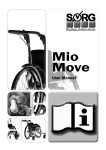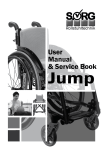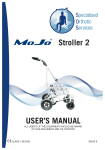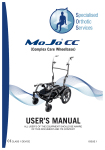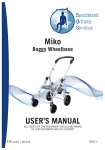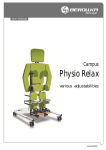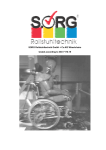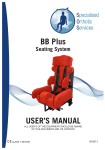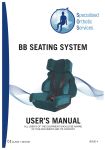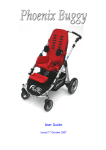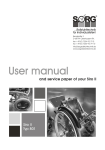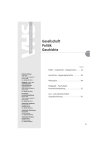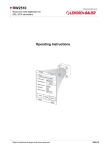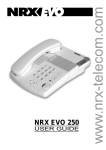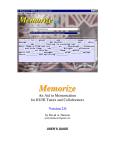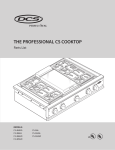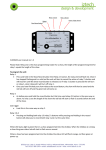Download Info Brochure - SORG Rollstuhltechnik
Transcript
Info Brochure – Crash Tested Wheelchairs by SORG Info Brochure – Crash Tested Wheelchairs by SORG Imprint: Editorial and Layout: Bernhard Wendel, Manfred Ball As of: 15 March 2013 Technical alterations and misprints reserved. Responsible according to press law: SORG Rollstuhltechnik GmbH + Co.KG Benzstraße 3-5 68794 Oberhausen-Rheinhausen Phone +49(0)7254 / 9279-0 Fax +49(0)7254 / 9279-10 Mail [email protected] Web www.sorgrollstuhltechnik.de © by SORG Rollstuhltechnik GmbH + Co.KG Benzstraße 3-5, 68794 Oberhausen-Rheinhausen. All texts and images are subject to international copy right and must not be published – not even in extracts – without our explicit permission! Contents 1 Introduction.......................................................................................................................................... 3 1.1 General Information ...................................................................................................................... 3 1.2 Meaning of Signs ........................................................................................................................... 4 2 Applied and Relevant Test Standards (Overview) ................................................................................ 4 3 Restraint Systems ................................................................................................................................. 5 3.1 Wheelchair Restraint System ........................................................................................................ 5 3.2 Passenger Restraint System .......................................................................................................... 6 3.3 Instructions on the Transportation of a Wheelchair as Seat in a Passenger Car .......................... 6 4 Safety Instructions ................................................................................................................................ 8 5 Overview of SORG Wheelchairs Licensed for Transportation According to ISO 7176-19 .................... 9 6 Attachment Points on SORG Wheelchairs (Use without Power Junctions from Third Party Suppliers) ............................................................................................................................................................... 10 Model Vector ..................................................................................................................................... 10 Model Mio ......................................................................................................................................... 11 Model Kika ......................................................................................................................................... 11 Model Jump alpha ............................................................................................................................. 12 7 Manufacturers’ Addresses for Wheelchair and Passenger Restraint Systems Conforming to ISO 10542 ..................................................................................................................................................... 13 [2] Info Brochure – Crash Tested Wheelchairs by SORG 1 Introduction 1.1 General Information Safety in street traffic is and always will be a difficult and emotional issue for each emergency is an unfortunate and tragic event. While there are a number of regulations, norms, laws, and rules intended for the prevention of accidents, or at least the limitation of their consequences, there are too many factors at work in road traffic over which we can never have complete control. Even if appropriate safety arrangements are made, a car ride can never be more than relatively safe for any human being. How much more incalculable, then, is the risk, for wheelchair users transported in a passenger car while seated in their wheelchairs? The decisive parameters for our wheelchairs are factors such as functionality, weight saving, free movement, driving characteristics, etc. A safe seat in a passenger car, on the other hand, is developed under consideration of utterly different aspects. Seeing that the characteristics of these two systems are of such contradictory nature, it is impossible for a wheelchair, even if equipped with the respective restraint systems, to provide the same safety as a passenger seat firmly installed in the vehicle and provided with safety belts (restraint systems). Furthermore, even the installation of a restraint system on a wheelchair alone inherits a considerable risk of error. Provided that the guidelines of the producer and the attached restraint systems are respected, all SORG products listed in the table on page 9 conform to the requirements according to ISO 7176-19 and/or DIN 75078 Part 2. In this brochure, you will find information and advice on SORG products approved for transportation in a handicapped accessible passenger car. We will inform you about: •the wheelchair restraint system (WRS) •the passenger restraint system (PRS) •regulations and advice on the use of a wheelchair in a handicapped accessible passenger car •the norms applied •our crash tested wheelchairs All our products that have been successfully tested according to ISO 7176-19 are highlighted with this button. Additionally, this hook symbol is added on the type plate of the respective product. [3] Info Brochure – Crash Tested Wheelchairs by SORG 1.2 Meaning of Signs ATTENTION This sign highlights personal safety-relevant aspects of utmost importance. ATTENTION This sign highlights warnings/notes about product damage of utmost importance. PLEASE NOTE This highlights INFORMATION or rules of great importance. PLEASE READ This refers to other chapters within this brochure or additional materials. 2 Applied and Relevant Test Standards (Overview) [4] Info Brochure – Crash Tested Wheelchairs by SORG When using a wheelchair or a seat shell under frame for transportation in a passenger car, the retaining elements used must conform to the requirements of ISO 7176-19 and DIN 75078 Part 2 in order to improve the safety of the wheelchair user during transportation and a possible frontal collision. These retaining elements are two systems which work independently from each other: the passenger restraint system PRS (green in image 1) and the wheelchair restraint system WRS (red in image 1). ISO 10542-2 describes the requirements for both systems and gives exact definitions for their field of effect and use. Image 1: The crash test according to ISO 7176-19 can only cover a fraction of the possible risk moments in street traffic. It only tests frontal collisions at a speed of 50 km/h (approx. 30 m/h) and we therefore recommend that the wheelchair user sits down on a regular passenger seat using the respective seat belts. Given their purpose and light-weight construction, wheelchairs can never obtain the same stable characteristics and safety as a firmly installed passenger seat does. Unfortunately, we cannot test all restraint systems available on the market. All models in table 9, however, fulfil the requirements for ISO 7176-19 and can therefore be used for passenger transportation in a vehicle. For our crash tests, we firmly attach a SORG wheelchair using a 4-point restraint system conforming to ISO 10542-2 and secure a dummy with a 3point restraint system for passengers according to ISO 10542-2. During the test, we decelerate the wheelchair with the dummy at a terminal speed of 50 km/h (approx. 30 m/h) and a crash deferral of 20 g. The wheelchair must withstand the enormous forces without changing its structure. Image 2: For these reasons, transportation in a passenger car must exclusively be conducted in accordance with the test set-up of the crash test, meaning: • The wheelchair must be installed in driving direction. • It must be secured with a 4-point restraint system firmly installed in the passenger car complying with ISO 10542-2 (red, image 1 + 2) • The wheelchair user must be secured with a pelvis and shoulder belt, both firmly installed in the car and confirming with ISO 105422 (green, image 1 + 2). If possible, a head rest should be used. 3 Restraint Systems 3.1 Wheelchair Restraint System We produce our wheelchairs aiming at good driving characteristics, functionality, and weight reduction. These characteristics are contradicted by the requirements for a safe seat necessary for transportation in a passenger car. Under unfavourable circumstances, it is therefore possible that a wheelchair with the respective restraint systems poses a significantly higher safety risk than a regular passenger seat firmly installed in the vehicle with its restraint systems. Moreover, the attachment of restraint systems onto a wheelchair alone triggers a considerable risk of error. Consequently, we recommend: Please use, whenever possible, the seat systems firmly installed in the vehicle and the respective safety belts. Transfer the wheelchair user into a firmly installed seat in the passenger car. We are well aware of the fact that there might be factors making this procedure impossible. Yet, please consider: while passenger and wheelchair restraint systems can reduce the risk of injury if used properly, they can never eliminate it completely. For this reason, we do not recommend using a wheelchair as a seat for transportation in a passenger car. For the same reason, we cannot take any responsibility for possible physical damage of the wheelchair user in the event of an accident. To secure the wheelchair in the vehicle, 4-point restraint systems complying with ISO 10542-2 are to be used exclusively. Please follow the user manual of the respective manufacturer of the system. [5] Info Brochure – Crash Tested Wheelchairs by SORG Such restraint systems generally consist of ground rail tracks inside the vehicle and the four retractors to secure the wheelchair. Please take into account the differences of the systems of various manufacturers as well as their requirements for attaching the retractors (tension belt retainer) onto the ground rail tracks of the vehicle and the coupling with the passenger restraint system (power junction or wheelchair) via a hook, karabiners, belt locks, or belt loops. 3.2 Passenger Restraint System Independently from the wheelchair, the car must be equipped with a passenger restraint system (PRS). This is usually a safety belt like the ones used in cars as well as a pelvis belt which needs to be adaptable to the wheelchair restraint system with respect to the linking device for the retractors/power junction. It is not essentially obligatory to use a head rest according to ISO 7176-19. However, it may increase the safety of the wheelchair user when used and installed appropriately. On the other hand, though, it may be a considerable safety risk if used inappropriately. Conventional wheelchair pelvis belts or other positioning aids are NOT suitable for holding the wheelchair user in place during transportation in a passenger car. 3.3 Instructions on the Transportation of a Wheelchair as Seat in a Passenger Car Please follow the instructions described in this exemplary process of fastening the wheelchair and buckling up its user: - - - [6] Place the wheelchair in driving direction in between the ground rail tracks in the centre of the vehicle; secure it with the locking brake. The free spaces indicated in image 1 + 2 ought to be adhered to in order to protect the user from harm. The tension belts/retractors installed on the ground of the vehicle must be linked to a suitable counterpart (e.g. car belt locking system) on the wheelchair. Belts, hooks, karabiners, etc. may only be attached in places designated for this purpose. Turn the casters forward to improve stability. Please make sure that the belts of the wheelchair restraint system do not exceed a maximum angle (to the horizontal) of 60° at the front and 45° at the back (image 3). Tense the tension belts according to the producer’s instructions. After locking, the pelvis belt of the passenger restraint system must run in an angle of 45-75° to the horizontal. Preferably, the angle should be closer to 75° but under no circumstances should it exceed 75° (image 4 + 5). Hook the shoulder belt into the pelvis belt. The shoulder belt must firmly rest on the body across shoulder and chest. Should this not be possible, the user must not be transported in this position. Always keep belts close to the body. The belt must not be kept away from the body by any components (e.g. arm rests, wheels). (image 6) According to DIN 75078 Part 2 it is recommended to use a head rest during transportation in a passenger car. As a general rule, the head rest used should be attached to the vehicle or be activated from the sides or above. If using a head rest attached to the wheelchair, please mind the following points: If there is a manual on attaching the head rest, follow it. The head rest should be placed as least as high as the head’s centre of gravity. The distance behind the head should be as small as possible. Info Brochure – Crash Tested Wheelchairs by SORG Image 1 Image 2 Image 3 Image 4 Image 5 Image 6 55° wrong [7] right Info Brochure – Crash Tested Wheelchairs by SORG 4 Safety Instructions It is absolutely imperative that you follow the safety instructions below: If the wheelchair/seat shell under frame is used as seat in the vehicle, it must be positioned in driving direction (never sideways). The manufacturer’s instructions must be followed when using the restraint systems. To restrain the wheelchair/under frame, 4-point-restraint belts complying with the norms described in chapter 2 must be used. The belt eyes/buckle tongue on the chair/under frame must be compatible with the system of the restraint belt ends. The wheelchair/seat shell under frame may exclusively be used according to the user manual. If the wheelchair is equipped with a back angle adjustment device or a seat tilt, make sure the back/user is in upright position during transportation. Remove all accessories, e.g. therapy tables, abduction wedges, loose cushions, etc. Secure them separately. Since SORG does not test accessory drives, the effects they would suffer during transportation cannot be predicted. Please remove and secure them separately. Make sure that both pelvis and shoulder belt are being used and placed correctly. Restraint belts complying with the norms described in chapter 2 are to be used exclusively. Safety belts must not run along building parts and be kept away from the body. Safety belts must rest on the body as tightly as possible. Safety belts must not be twisted during transportation. Other positioning/fixation aids serving the positioning of the user may be used in supplementary fashion. However, they do not replace passenger and wheelchair restraint systems. No changes must be conducted on the attachment points of the wheelchair or the components of the frame without consulting the manufacturer. If this rule is not followed, the wheelchair can no longer be used as a seat during transportation and the product liability expires. If you are involved in a collision accident, the product can no longer be used as a seat for transportation. We recommend replacing the product. The safety of the person transported in the wheelchair/under frame is highly dependent on the person responsible for transportation. Make sure that this person is educated adequately and well familiarised with the regulations and safety instructions. [8] Info Brochure – Crash Tested Wheelchairs by SORG 5 Overview of SORG Wheelchairs Licensed for Transportation According to ISO 7176-19 SORG Wheelchairs tested acc. to ISO 7176-19 Model Date tested with System acc. to ISO10542 restrictions Manual wheelchairs 28.03.2011 4-point restraint system Trend Sport/ 29.11.2010 Trend Sport abdu 4-point restraint system Skater/ Skater abdu 4-point restraint system Trend/ Trend abdu Jump alpha 02.11.2010 09.01.2013 4-point restraint system 10.10.2014 4-point restraint system Jump beta Sport-Frame & Swing-away-Frame Vector Mio 14.03.2011 4-point restraint system 31.01.2012 4-point restraint system - - - Kika 22.09.2011 Tilty abdu Tilty Vario 23.11.2010 28.03.2011 4-point restraint system - 4-point restraint system 4-point restraint system - - - when using headrest by SORG, Set of 2 Stabilizer bar is needed No admission in combination with wheel base lengthening Steel caster adapters required when using headrest by SORG, Set of 2 Stabilizer bar is needed No admission in combination with wheel base lengthening Steel caster adapters required when using headrest by SORG, Set of 2 Stabilizer bar is needed No admission in combination with wheel base lengthening when using headrest by SORG, Set of 2 Stabilizer bar is needed No admission in combination with wheel base lengthening axle plates in most passive position not possible. Up to back height 35, when using headrest by SORG, Set of 2 Stabilizer bar is needed No admission in combination with wheel base lengthening axle plates in most passive position not possible. when using headrest by SORG, Set of 2 Stabilizer bar is needed No admission in combination with wheel base lengthening axle plates in most passive position not possible. Carbon version is not admitted Serial number less than 227850 (Conversion to back angle steel required) Non-growable curved back plate is not admitted Necessary: Later installation blocked gas pressure spring for serial numbers less than 226044 No admission in combination with wheel base lengthening when using headrest by SORG, Set of 2 Stabilizer bar is needed Steel caster adapters required when using headrest by SORG, Set of 2 Stabilizer bar is needed Seat shell bases Tilty II 29.11.2010 Siro II 27.04.2011 Loop by SORG [9] 22.01.2015 4-point restraint system 4-point restraint system 4-point restraint system when using headrest by SORG, Set of 2 Stabilizer bar is needed - Steel caster adapters required - No admission in combination with wheel base lengthening - No admission in combination with gas pressure spring back - - No admission in combination with wheel base lengthening Info Brochure – Crash Tested Wheelchairs by SORG 6 Attachment Points on SORG Wheelchairs (Use without Power Junctions from Third Party Suppliers) In this chapter, you will find information on the attachment points of some of the licensed SORG products. Conforming to ISO 7176-19, the wheelchair’s attachment points are marked with a standardised hook symbol sticker (see pictures below). It is on these marked points that hooks, karabiners, loops, etc. are to be attached. Of course, the attachments need to be symmetrical on both sides. Please make sure that the pelvis belt is attached to the back retractors of the restraint system used. Should this not be possible, e.g. for lack of attachment points on the retractors, the defined restraint points cannot be used. In this case, please exchange the retractors with new ones on which the pelvis belt can be attached. Further information on belts is available at the manufacturer of the wheelchair restraint systems. If you are using a restraint system by Fa. AMF Bruns, please follow the AMF user manual and conduct the respective attachments. All SORG models that do not appear on page 10 of this brochure are only to be used with wheelchair and passenger restraint systems by AMF Bruns GmbH. Model Vector [10] Rear attachment points Detail view left side Front attachment point right side Front attachment point left side Info Brochure – Crash Tested Wheelchairs by SORG Model Mio Rear attachment points Detail view left side Front attachment point right side Front attachment point left side Model Kika [11] Rear attachment points Detail view left side Front attachment point right side Front attachment point left side Info Brochure – Crash Tested Wheelchairs by SORG Model Jump alpha [12] rear attachment points Detail view right side Front attachment points Front attachment point left side Info Brochure – Crash Tested Wheelchairs by SORG 7 Manufacturers’ Addresses for Wheelchair and Passenger Restraint Systems Conforming to ISO 10542 AMF-BRUNS Gustav Bruns GmbH & Co. KG Hauptstraße 101 26689 Apen Germany Phone: +49 (0) 44 89 / 72 71 01 www.kraftknotenadapter.de Q‘Straint Europe 72-76 John Wilson Business Park Whitstable Kent, CT5 3QT United Kingdom Phone: +44 (0)1227 773035 www.qstraint.com [13]













